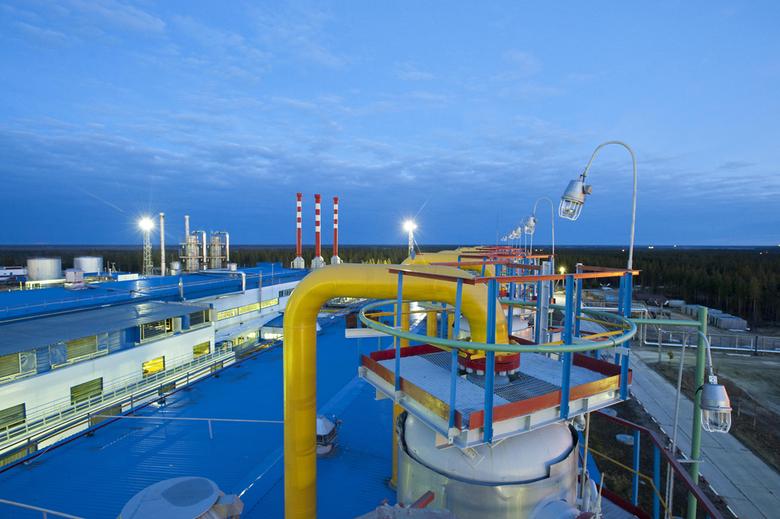
GAZPROM'S STRATEGY

Alexander Medvedev, Deputy Chairman of the Management Committee of Gazprom, addressed Gastech attendees on Tuesday afternoon in a keynote speech.
Medvedev began his remarks by noting, "These are difficult times...but if you work hard, you can make progress." The chairman went on to discuss changes in the global LNG market in light of oil price declines. He also shared updates of Gazprom's LNG strategy for Asia-Pacific and its progress on the expansion of its Sakhalin-2 LNG terminal.
Asia-Pacific's LNG market is evolving. Medvedev noted that Asia-Pacific is, and will continue to be, the world's main driver of global gas consumption growth. Projections call for regional import volumes to exceed 400 billion cubic meters per year (Bcmy) by 2025 from the present level of 280 Bcmy, Medvedev said.
The significant slide in crude oil prices seen in 2014 and 2015 has altered the proportion of oil-indexed and gas-indexed LNG sales. Earlier this year, LNG that was priced according to the Asian oil basket became cheaper than LNG from North America, making gas-indexed LNG contracts less attractive than they were previously.
Medvedev cited advantages for oil indexation for LNG prices, including predictability and freedom of worry from manipulation by other market players. These benefits help ensure the security of long-term LNG investments, he said.
Gazprom's strategy for Asian LNG. Even under the evolving market conditions, Gazprom is confident that it can retain its competitive position and market share in the Asia-Pacific region, Medvedev said.
Asia-Pacific's LNG market, in which Gazprom has been active since 2005, will be a key outlet for the company's future LNG exports. Over the last decade, Gazprom has sent 60% of its total LNG export volume to Asia-Pacific.
Gazprom LNG projects are characterized by key advantages, including a vast natural gas resource base, proximity to consumer markets and experience in international business cooperation.
In the past two years, Gazprom's LNG trading portfolio has nearly doubled. In 2014 alone, the company delivered 52 cargoes of LNG comprising a total volume of 3.4 million tons (MMt), and the company expects to sell similar volumes this year. "This has given us a very positive outlook for the future," Medvedev noted.
Gazprom delivers most of its LNG under long-term and medium-term contracts. Immediately prior to Medvedev's keynote speech, Pavilion Energy CEO Seah Moon Ming noted in his keynote address that Pavilion had recently inked a 10-year LNG supply agreement with Gazprom.
Additionally, Gazprom signed a deal in 2014 with GAIL Ltd. of India to supply 2.5 million tons of LNG over a 20-year agreement. Gazprom also supplies LNG under short-term contracts. Medvedev cited the example of Gazprom's recent supply of 15 LNG cargoes, totaling approximately 1 MMt, to Argentina's ENARSA Energia.
Along with its partners Shell, Mitsui and Mitsubishi, Gazprom is also constructing a third train for its Sakhalin-2 LNG project Russia's Sakhalin Island in the North Pacific Ocean. The 5.4-MMty train is expected to begin offloading LNG cargoes from 2021. Pre-FEED for the project is complete, and the economic feasibility has been confirmed. The new train will utilize existing infrastructure and process gas from the Sakhalin-3 fields.
Medvedev also noted that the Baltic LNG project, originally slated to produce 10 MMtpy of LNG from 2021, could supply up to 15 MMtpy to Asia-Pacific countries if the project is realized.
Keeping an eye on China. Gazprom is making China a key strategic market for the expansion and diversification of its LNG export business. Gazprom has a standing contract with China to supply 38 Bcmy of gas via an Eastern route, and some progress has been made on the construction of production, transportation and processing infrastructure. The 30-year agreement would include the construction of a conduit—the Power of Siberia pipeline—between Russia and China.
Meanwhile, negotiations on commercial terms are ongoing for 30 Bcmy of gas exports to China via a western route along another new pipeline, Power of Siberia 2. This agreement would also span 30 years. Additionally, the economic feasibility of sending gas supplies from the Russian Far East is being examined.
However, the stabilization of China's economic growth from its previously rapid pace is forcing the revision of industry development plans. For this reason, time is needed to reassess and reevaluate China's future energy demand growth.
However, Medvedev asserted that Gazprom remains confident in the significant growth potential of China's gas demand. As a result, Gazprom continues to extend its business ties with Chinese partners for gas supply agreements as well as for gas storage, electricity generation and gas processing projects.
Gazprom has been operating in Europe for more than 40 years, but it is a relative newcomer to Asia-Pacific, which Medvedev called "a region of prime importance." The company is confident that its presence in the Asia-Pacific market will only strengthen over time.
-----
More:




